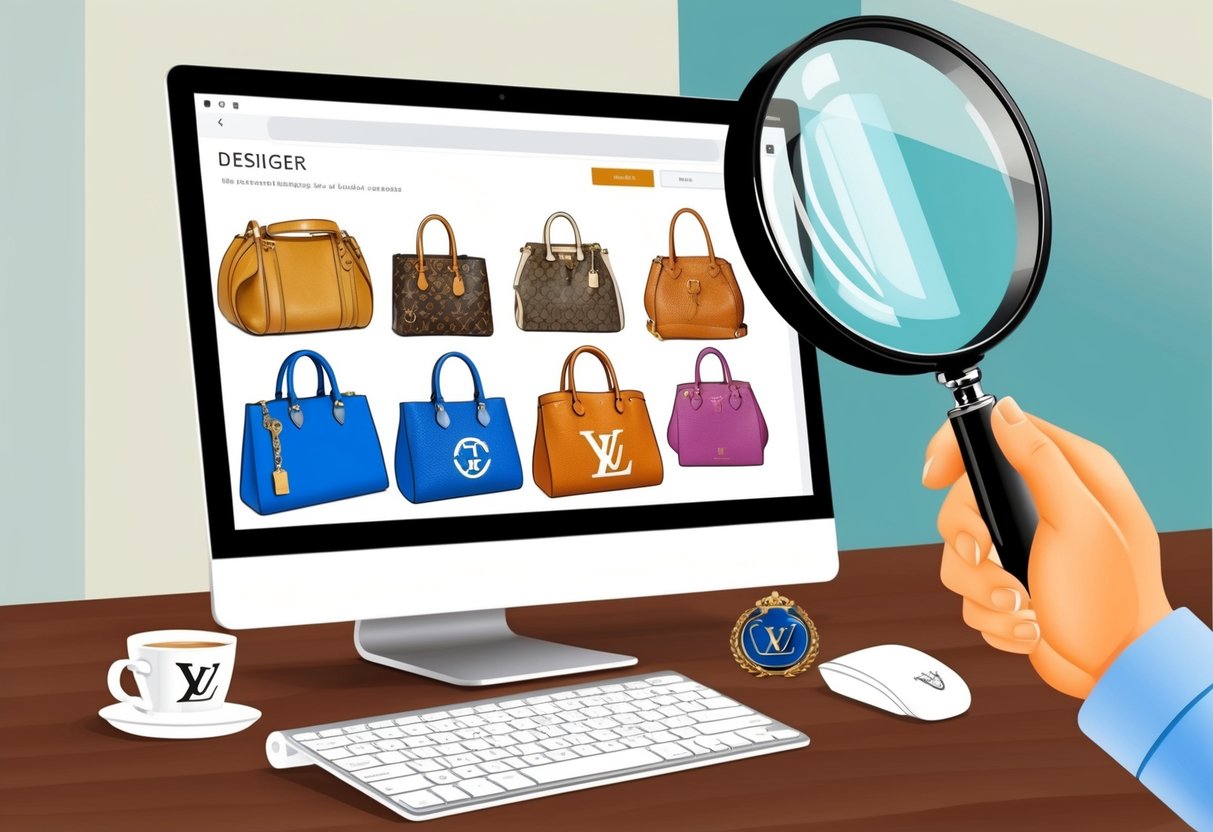
Shopping for authentic designer brands online is more popular than ever, but it comes with risks as counterfeiters continually improve their replicas. Spotting real luxury goods can feel overwhelming, especially with convincing fakes flooding marketplaces and social media shops.
Careful attention to logo placement, stitching quality, and details like zippers or clasps is essential to ensure authenticity.
Learning to identify inconsistency in branding, misspelled labels, off-center logos, and poor craftsmanship gives buyers a major advantage. High-quality designer items usually have unique hardware, precise designs, and a natural leather scent, while counterfeits often reveal themselves through crooked labels or a strong chemical odor.
For those interested in further details, this practical guide on how to recognize fake vs. original designer products provides additional expert tips.
Understanding Designer Brands and Counterfeits
Designer brands set themselves apart through craftsmanship, brand reputation, and signature details. Counterfeits try to mimic these aspects but often fall short in quality and authenticity.
Knowing the difference between authentic items and fake goods is critical for shoppers who want to avoid waste and disappointment.
What Qualifies as a Designer Brand
A designer brand is typically recognized for its unique identity, established reputation, and high-quality materials. These brands are known for craftsmanship, attention to detail, and exclusive designs that stand out in the marketplace.
Examples include luxury fashion houses like Chanel, Gucci, Louis Vuitton, and Hermes. Authentic designer products often feature specific markings, such as branded hardware, serial numbers, and consistent stitching patterns.
These elements signal genuine quality and help differentiate them from mass-produced imitations. Buyers can often verify a brand’s authenticity by comparing tags, materials, and overall construction to reference images and documentation.
In addition to logos and labels, designer brands may offer authenticity cards or certificates. The price point also tends to reflect their exclusivity and the cost of skilled labor and premium materials.
Defining Counterfeit and Fake Goods
Counterfeit goods are unauthorized copies designed to closely resemble genuine products, often deceiving customers with similar logos, tags, and packaging. Fake goods can include clothing, accessories, watches, and more, and are sold both online and in physical markets.
These items violate intellectual property laws and brand rights. Counterfeit products are usually made with cheaper materials, lack precise finishing, and may have misspelled labels or flaws in stitching that set them apart from the originals.
Fake goods might replicate the external appearance but fail to match the overall quality and durability of authentic designer items. Shoppers can spot counterfeits by closely inspecting details such as fabric feel, tag placement, and construction quality.
Consumers often rely on comparing reviews, images, and authentic product features to avoid being misled. Awareness of these differences is a key skill for anyone shopping for branded items.
Why Counterfeit Products Are a Problem
Counterfeit items create significant challenges for both consumers and legitimate brands. Buyers can end up wasting money on poorly made goods that may not last or deliver the expected experience.
Authentic brands suffer from revenue loss, trademark dilution, and damage to their reputation due to the existence of lower-quality fakes. Fake goods also impact ethical and legal standards.
They can be linked to unfair labor practices, organized crime, and lack accountability for product safety. Counterfeit goods may pose health risks if they include unregulated materials, especially in beauty or accessory items.
Brands continually invest in anti-counterfeiting measures, but counterfeit products remain a widespread issue. Consumers who know how to identify red flags can protect themselves and support innovation, quality, and integrity in the marketplace.
Common Tactics Used By Counterfeit Sellers
Counterfeit sellers use a combination of deceptive strategies to deceive buyers who are searching for authentic designer items. Recognizing these common tactics makes it easier to spot counterfeit products before making a purchase.
Misleading Product Descriptions
Many counterfeit sellers rely on writing product descriptions that closely mimic official brand language but carefully avoid using protected terms or guarantees. They often use vague descriptors such as “inspired by,” “style of,” or “like new” without directly claiming authenticity.
Sellers sometimes intentionally omit crucial details that would normally be included in a genuine product listing, like country of origin, serial numbers, or authentication cards. Certain counterfeit items are described using excessive superlatives—“premium quality,” “luxury feel”—to distract from the lack of real verification.
Some even copy-paste paragraphs from official brand websites, but leave out genuine care instructions or warranty information. Buyers should check for inconsistencies, misspellings, or awkward phrasing in the listing.
Listings with unclear return policies or that push urgency (“selling fast!”) are red flags for counterfeit products. Official retailers usually provide precise, accurate information and never hide key facts about their items.
Staged or Manipulated Product Photos
Counterfeit sellers frequently use heavily edited, staged, or stock images to make their listings appear legitimate. They might download official brand marketing photos or take pictures under ideal lighting that hides defects and distinguishing features.
Some listings only display a single angle or avoid close-ups of buttons, hardware, or labels. They may blur out or use watermarks over logos to avoid copyright issues, making it harder for shoppers to authenticate the product visually.
It’s also common for them to upload outdated photos, failing to show the current condition of the item. Buyers should always look for listings with multiple high-quality, close-up, and unfiltered photos of the actual product in hand.
Comparing the images to known authentic details, such as consistent stitching patterns and correct logo placement, is critical for identifying counterfeit items. US PIRG recommends checking packaging and labeling for any signs of tampering or inconsistency.
Fake Reviews and Ratings
Counterfeit sellers generate or solicit fake reviews to build trust quickly. These reviews often use generic praise and avoid specific details about the item, sometimes even referencing products that differ from what is in the listing.
Many fake ratings have no accompanying text or appear in bulk within a short timeframe. Counterfeit items appear to have perfect five-star reviews, yet lack any mention of actual product attributes.
Automated or incentivized reviews can be spotted by identical wording or overly positive commentary repeated across different sellers. Buyers are encouraged to read a variety of reviews, focusing on those marked as verified purchases or containing photos.
Scrutinizing dates and reviewer profiles may also help expose a pattern of fake reviews, making it easier to avoid counterfeit products. NPR provides further guidance on identifying deceptive seller behavior.



